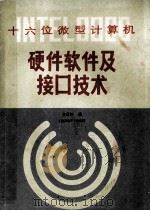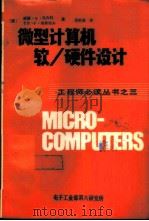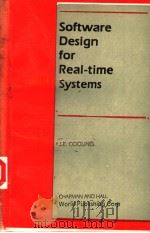《计算机组织与设计硬件/软件接口 英文版 第2版》
| 作者 | (美)亨尼丝(Hennessy,J.L.)等著 编者 |
|---|---|
| 出版 | 北京:机械工业出版社 |
| 参考页数 | 759 |
| 出版时间 | 1999(求助前请核对) 目录预览 |
| ISBN号 | 7111074378 — 求助条款 |
| PDF编号 | 88811928(仅供预览,未存储实际文件) |
| 求助格式 | 扫描PDF(若分多册发行,每次仅能受理1册) |
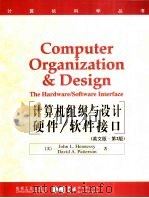
Index1
Glossary1
C Mapping Control to Hardware2
B The Basics of Logic Design2
A Assemblers,Linkers,and the SPIM Simulator by James R.Larus,University of Wisconsin2
APPENDICES2
CHAPTERS2
1 Computer Abstractions and Technology2
B.1 Introduction3
A.1 Introduction3
C.1 Introduction3
1.1 Introduction3
C.2 Implementing Combinational Control Units4
B。2 Gates,Truth Tables,and Logic Equations4
1.2 Below Your Program5
B.3 Combinational Logic8
C.3 Implementing Finite State Machine Control8
A.2 Assemblers10
1.3 Under the Covers10
A.3 Linkers17
B.4 Clocks18
A.4 Loading19
A.5 Memory Usage20
B.5 Memory Elements21
C.4 Implementing the Next-State Function with a Sequencer21
1.4 Integrated Circults:Fueling Innovation21
A.6 Procedure Call Convention22
1.5 Real Stuff:Manufacturing Pentium Chips24
C.5 Transiating a Microprogram to Hardware28
1.6 Fallacies and Pitfalls29
1.7 Concluding Remarks30
C.6 Concluding Remarks31
C.7 Key Terms32
A.7 Exceptions and Interrupts32
C.8 Exercises32
1.8 Historical Perspective and Further Reading32
B.6 Flinite State Machines35
A.8 Input and Output36
A.9 SPIM38
B.7 Timing Methodologies39
B.8 Concluding Remarks44
1.9 Key Terms44
B.10 Exercises45
B.9 Key Terms45
1.10 Exerclses45
A.10 MIPS R2000 Assembly Language49
2 The Role of Performance52
2.1 Introduction54
2.2 Measuring Performance58
2.3 Relating the Metrics60
2.4 Choosing Programs to Evaluate Performance66
2.5 Comparing and Summarizing Performance69
2.6 Real Stuff:The SPEC95 Benchmarks and Performance of Recent Processors71
A.11 Concluding Remarks75
2.7 Fallacies and Pitfalls75
A.13 Exercises76
A.12 Key Terms76
2.8 Concluding Remarks82
2.9 Historical Perspective and Further Reading83
2.10 Key Terms89
2.11 Exercises90
3 Instructions:Language of the Machine104
3.1 Introduction106
3.2 Operations of the Computer Hardware107
3.3 Operands of the Computer Hardware109
3.4 Representing Instructions in the Computer116
3.5 Instructions for Making Decisions122
3.6 Supporting Procedures In Computer Hardware132
3.7 Beyond Numbers142
3.8 Other Styles of MIPS Addressing145
3.9 Starting a Program156
3.10 An Example to Put It All Together163
3.11 Arrays versus Pointers171
3.12 Real Stuff:PowerPC and 80x86 Instructions175
3.13 Fallacies and Pitfalls185
3.14 Concluding Remarks187
3.15 Historical Perspective and Further Reading189
3.16 Key Terms196
3.17 Exercises196
4 Arithmetic for Computers208
4.1 Introduction210
4.2 Signed and Unsigned Numbers210
4.3 Addition and Subtraction220
4.4 Logical Operations225
4.5 Constructing an Arithmetic Logic Unit230
4.6 Multiplication250
4.7 Division265
4.8 Floating Point275
4.9 Real Stuff:Floating Point In the PowerPC and 80x86301
4.10 Fallacles and Pitfalls304
4.11 Concluding Remarks308
4.12 Historical Perspective and Further Reading312
4.13 Key Terms322
4.14 Exercises322
5 The Processor:Datapath and Control336
5.1 Introduction338
5.2 Building a Datapath343
5.3 A Simple Implementation Scheme351
5.4 A Multicycle Implementation377
5.5 Microprogramming:Simpllfying Control Deslgn399
5.6 Exceptions410
5.7 Real Stuff:The Pentium Pro Implementation416
5.8 Fallacles and Pitfalls419
5.9 Concluding Remarks421
5.10 Historical Perspective and Further Reading423
5.11 Key Terms426
5.12 Exercises427
6 Enhancing Performance with Pipelining434
6.1 An Overview of Pipelining436
6.2 A Pipelined Datapath449
6.3 Pipelined Control466
6.4 Data Hazards and Forwarding476
6.5 Data Hazards and Stalls489
6.6 Branch Hazards496
6.7 Exceptions505
6.8 Superscalar and Dynamic Pipelining510
6.9 Real Stuff:PowerPC 604 and Pentium Pro Pipelines517
6.10 Fallacies and Pitfalls520
6.11 Concluding Remarks521
6.12 Historical Perspective and Further Reading525
6.13 Key Terms529
6.14 Exercises529
7 Large and Fast:Exploiting Memory Hlerarchy538
7.1Introduction540
7.2 The Basics of Caches545
7.3 Measuring and Improving Cache Performance564
7.4 Virtual Memory579
7.5 A Common Framework for Memory Hlerarchles603
7.6 Real Stuff:The Pentium Pro and PowerPC 604 Memory Hierarchies611
7.7 Fallacies and Pitfalls615
7.8 Concluding Remarks618
7.9 Historical Perspective and Further Reading621
7.10 Key Terms627
7.11 Exercises628
8 Interfacing Processors and Peripherals636
8.1 Introduction638
8.2 I/O Performance Measures:Some Examples from Disk and File Systems641
8.3 Types and Characteristics of I/O Devices644
8.4 Buses:Connecting I/O Devices to Processor and Memory655
8.5 Interfacing I/O Devices to the Memory,Processor,and Operating System673
8.6 Designing an I/O System684
8.7 Real Stuff:A Typical Desktop I/O System687
8.8 Fallacies and Pitfalls688
8.9 Concluding Remarks690
8.10 Historical Perspective and Further Reading694
8.11 Key Terms700
8.12 Exercises700
9 Multiprocessors710
9.1 Introduction712
9.2 Programming Multiprocessors714
9.3 Multiprocessors Connected by a Single Bus717
9.4 Multiprocessors Connected by a Network727
9.5 Clusters734
9.6 Network Topologies736
9.7 Real Stuff:Future Directions for Multiprocessors740
9.8 Fallacies and Pitfalls743
9.9 Concluding Remarks-Evolution versus Revolution in Computer Architecture746
9.10 Historical Perspective and Further Reading748
9.12 Exercises756
9.11 Key Terms756
1999《计算机组织与设计硬件/软件接口 英文版 第2版》由于是年代较久的资料都绝版了,几乎不可能购买到实物。如果大家为了学习确实需要,可向博主求助其电子版PDF文件(由(美)亨尼丝(Hennessy,J.L.)等著 1999 北京:机械工业出版社 出版的版本) 。对合法合规的求助,我会当即受理并将下载地址发送给你。
高度相关资料
-

- 计算机文件组织入门
- 1985 北京:人民邮电出版社
-
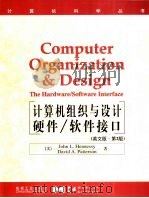
- 计算机组织与设计硬件/软件接口:第2版:英文BTheBasicsofLogicDesign
- 1999年09月第1版 机械工业出版社
-

- 微计算机处理机硬件软件应用
- 1979 上海市电气成套自动化研究所情报室
-
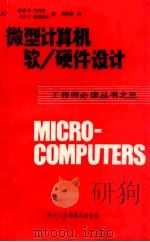
- 微型计算机软/硬件设计
- 电子工业第六研究所
-
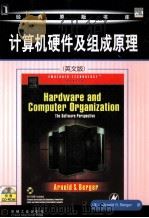
- 计算机硬件及组成原理 英文版
- 北京:机械工业出版社
-
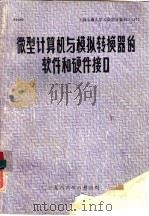
- 微型计算机与模拟转换器的软件和硬件接口
- 1986 上海:上海交通大学出版社
-
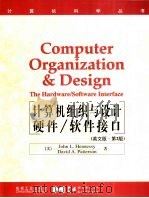
- 计算机组织与设计硬件/软件接口 第2版 英文AAssemblers,Linkers,andthesplmsimulator
- 1999 北京:机械工业出版社
-
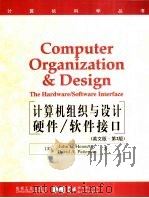
- 计算机组织与设计硬件/软件接口 第2版 英文CMappingControltoHardware
- 1999 北京:机械工业出版社
-
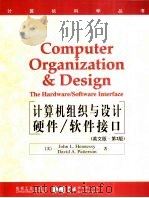
- 计算机组织与设计硬件/软件接口 第2版 英文Glossary
- 1999 北京:机械工业出版社
-
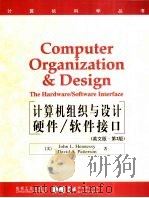
- 计算机组织与设计硬件/软件接口 第2版 英文Index
- 1999 北京:机械工业出版社
-
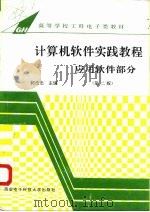
- 计算机软件实践教程 应用软件部分 第2版
- 1985 西安:西安电子科技大学出版社
-
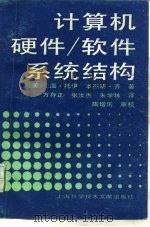
- 计算机硬件/软件系统结构
- 1990 上海:上海科学技术文献出版社
提示:百度云已更名为百度网盘(百度盘),天翼云盘、微盘下载地址……暂未提供。➥ PDF文字可复制化或转WORD
